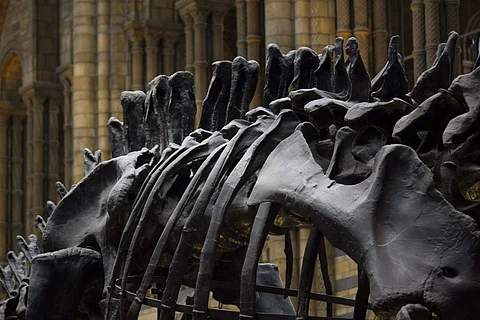

DENVER: In a first, researchers have found details about how the Earth's terrestrial ecosystems recovered following the Cretaceous-Paleogene extinction (KPgE) event -- that put an end to the reign of the dinosaurs 66 million years ago -- and suspect that volcanic eruptions in the Indian subcontinent may have contributed to the recovery.
The researchers, including those from the Denver Museum of Nature and Science in the US, found extremely rare fossils of terrestrial plants and animals who inherited the Earth after the KPgE in central Colorado's Corral Bluffs.
The findings of the study, published in the journal Science, revealed a detailed snapshot of the first million years of recovery of species and their ecosystems following the extinction, showing the dynamic interrelationships of plants, animals, and the climate.
The researchers said that several aspects of the ecosystem recovery happened almost within 300,000 years after the extinction event.
The maximum mammalian body size increased by three-fold in about 300,000 years post the event, which they suspected is associated with the increased richness in megafloral species.
The study also noted that there may have been a stark shift in the diet of mammals from an insectivorous or omnivorous one to a sustenance based on plants following the extinction event.
According to the researchers, detailed records of the ecological rebound after a major extinction event may provide important insights for predicting how ecosystems recover following catastrophic extinction events -- including the latest sixth mass extinction event that we are currently going through.
"The transition from an ecosystem characterized by a small-bodied mammalian fauna, post-disaster ferns, and low diversity plant communities to one exhibiting a larger-bodied mammalian fauna, and more ecologically and taxonomically complex forests mirrors modern post-disaster ecological successions, but on a much longer timescale," the researchers wrote in the study.
The study also revealed that the recovery was facilitated by a strong link between the planet's geological cycles and the biosphere.
"The Deccan Traps of the Indian subcontinent represent repeated and voluminous volcanic eruptions during the post-KPgE Earth system succession. These eruptions might have induced warming pulses via the release of greenhouse gases," the researchers said.
According to the study, the Deccan eruptions likely influenced the chemistry of the Earth's atmosphere, in turn shaping the post-KPgE ecosystem recovery across the planet.